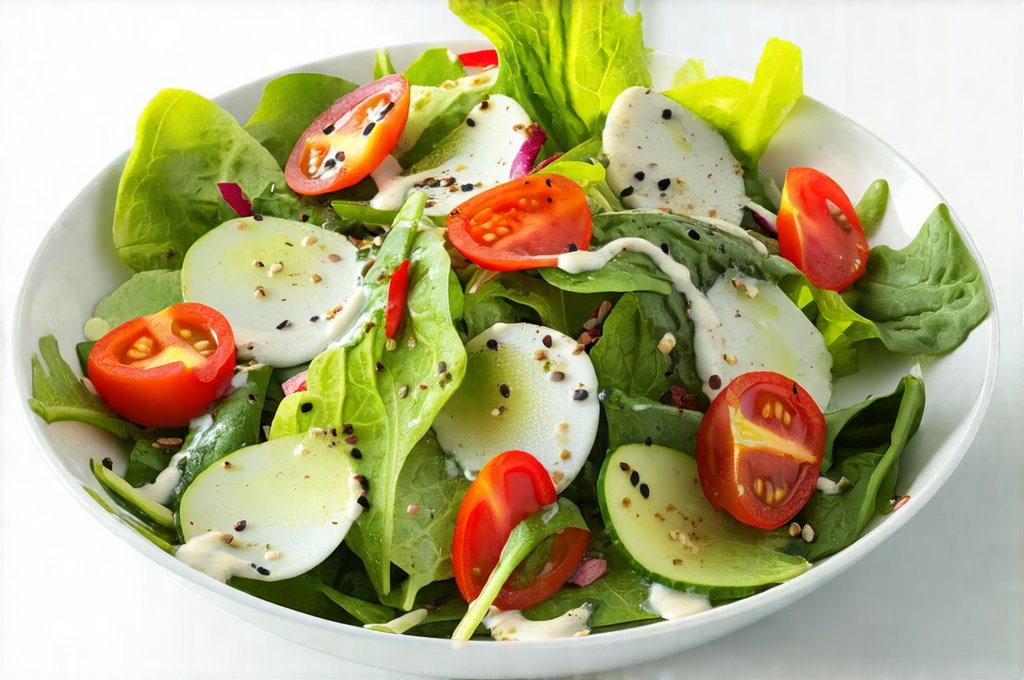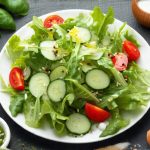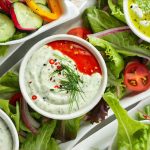Gastroesophageal reflux disease (GERD) affects millions worldwide, causing uncomfortable symptoms like heartburn, regurgitation, and even difficulty swallowing. While dietary modifications are often recommended to manage GERD, navigating food choices can feel restrictive. Many individuals with GERD find that certain foods exacerbate their symptoms, leading to anxiety around mealtimes. However, a flavorful and satisfying diet is achievable, even with reflux sensitivities. Salads, traditionally seen as healthy and refreshing, can be particularly challenging for those with GERD due to common ingredients like tomatoes, citrus fruits, and vinegar-based dressings. This article will explore how to build GERD-friendly salads that minimize discomfort while maximizing nutritional value and taste, focusing on appropriate dressings and ingredient selections.
The key to enjoying salads without triggering reflux lies in understanding which components are more likely to cause issues and finding suitable alternatives. Acidic ingredients are often the biggest culprits, but even seemingly harmless foods can contribute depending on individual sensitivities. It’s important to remember that everyone is different; what bothers one person may not bother another. This guide will provide a foundation for building salads tailored to your specific needs and tolerances, offering options for dressings, leafy greens, vegetables, protein sources, and healthy fats. We’ll focus on minimizing irritants while still creating delicious and satisfying meals – because managing GERD shouldn’t mean sacrificing enjoyment of food.
Building Your Base: Leafy Greens & Beyond
The foundation of any salad is the leafy green base. While iceberg lettuce is often avoided for its lack of nutritional value, it can be a good option for those with very sensitive stomachs as it’s generally low in acid and fiber. However, more nutrient-rich alternatives are readily available that can also be GERD-friendly. Romaine lettuce is usually well-tolerated, offering a satisfying crunch without excessive acidity. Spinach, while nutritious, can sometimes cause issues for some individuals due to its oxalate content; start with small amounts if you’re trying it out. Butter lettuce and red leaf lettuce are generally milder options that many find easier to digest. Beyond traditional leafy greens, consider incorporating cooked greens like steamed kale or Swiss chard – cooking them reduces their acidity and makes them more digestible.
It’s important to thoroughly wash all greens before using them, regardless of the type. This helps remove any potential irritants or pesticides. Mixing different types of greens can also add variety in texture and nutrients. For instance, combining romaine with a small amount of butter lettuce offers both crunch and mildness. Consider the overall volume of your salad; large portions can sometimes exacerbate reflux symptoms, so start with moderate servings and adjust as needed. Remember to listen to your body and identify which greens work best for you.
Dressings That Won’t Burn: Gentle Flavor Profiles
Dressings are often a major source of GERD triggers in salads. Traditional vinaigrettes containing vinegar or citrus juice are typically avoided, as their acidity can worsen reflux symptoms. Creamy dressings, while seemingly gentler, can be high in fat which also slows down digestion and increases the risk of heartburn. The key is to find dressings that are low in acid, moderate in fat, and use gentle flavor profiles. Olive oil-based dressings with minimal added ingredients are a good starting point. A simple dressing made from olive oil, a pinch of salt, and perhaps some mild herbs like basil or oregano can be surprisingly flavorful.
Avocado-based dressings offer a creamy texture without the high fat content of traditional dairy-based options. Pureed avocado blended with a little water, lemon juice (use cautiously and start with tiny amounts), and seasonings can create a delicious and GERD-friendly dressing. Tahini-based dressings are another excellent choice; tahini is made from sesame seeds and provides a nutty flavor along with healthy fats. Avoid adding strong spices or garlic to your dressings, as these can also be triggers for some individuals. Experimenting with herbs like dill, parsley, and chives can add flavor without irritating the stomach. When introducing new dressings, start with small amounts to assess your tolerance. How to use meal timing can also help with digestion and reduce discomfort after meals.
Choosing Your Add-Ins: Vegetables & Proteins
Vegetables: Many vegetables are perfectly safe and beneficial for those with GERD, but some require more caution. Root vegetables like carrots, beets, and sweet potatoes are generally well-tolerated, offering sweetness and nutritional value. Green beans, peas, and asparagus (in moderation) can also be included in your salad without issue. However, avoid or limit tomatoes, onions, garlic, peppers, and broccoli – these are known to trigger reflux symptoms in many individuals. If you do include a small amount of a potentially triggering vegetable, pair it with other GERD-friendly ingredients and monitor your reaction.
Proteins: Lean protein sources are essential for a balanced salad. Grilled chicken or fish (baked is even better) are excellent choices, providing protein without excessive fat. Tofu, prepared in a gentle manner (steamed or baked rather than fried), is another good option. Hard-boiled eggs offer a convenient and nutritious source of protein. Avoid fatty cuts of meat, processed meats, and anything heavily seasoned with spices. Portion control is important here – large portions of protein can also contribute to heartburn. How long-term use of NSAIDs can affect gut health and sensitivity, so be mindful when choosing pain relief options.
Healthy Fats: Incorporating healthy fats adds flavor and helps with nutrient absorption. Avocado, as mentioned earlier, is an excellent choice both in dressings and as a salad topping. A small amount of nuts or seeds (such as almonds, walnuts, or chia seeds) can provide healthy fats and texture. Avoid fried foods and excessive amounts of oil. Remember that even healthy fats should be consumed in moderation to prevent digestive discomfort. It’s important to understand the impact energy drinks have on acid imbalance as well, and limit consumption.
Tips for Minimizing Reflux & Maximizing Enjoyment
- Eat Slowly: Rushing through meals can worsen reflux symptoms. Take your time, chew thoroughly, and savor each bite.
- Portion Control: Smaller, more frequent meals are generally better tolerated than large portions.
- Avoid Late Night Eating: Allow at least 2-3 hours between your last meal and bedtime to give your digestive system time to work.
- Stay Hydrated: Drinking water throughout the day helps dilute stomach acid and aids digestion.
- Identify Your Triggers: Keep a food diary to track which foods exacerbate your symptoms and avoid them accordingly.
- Listen to Your Body: Pay attention to how different foods affect you and adjust your diet based on your individual needs.
Final Thoughts: A Personalized Approach
Building GERD-friendly salads is about finding what works best for you. There’s no one-size-fits-all solution, so experimentation and careful observation are key. Don’t be afraid to try different combinations of greens, dressings, and add-ins until you find a salad that satisfies your taste buds without triggering uncomfortable symptoms. Remember that managing GERD is often about making small, sustainable changes to your diet and lifestyle – not about deprivation. By focusing on gentle flavors, minimizing acidic ingredients, and listening to your body, you can enjoy delicious and nutritious salads as part of a healthy and balanced diet. BRAT Diet can be helpful during acute flare-ups. If reflux symptoms are accompanied by other issues, crossover between vestibular disorders and gut reflexes should be considered. Finally, remember that cold environments can slow stomach function.


















